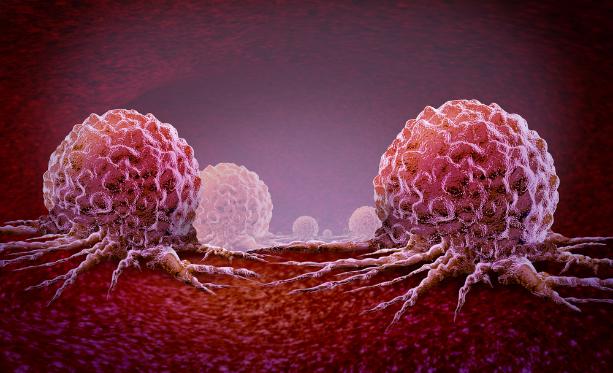The goal of treatment at stage 4 cancer is to reduce symptoms and keep the cancer from spreading. The specific treatments depend on the type of cancer and how far it has spread.
A care team diagnoses cancer using physical exams, x-rays, imaging scans and other tests. They also use information from a biopsy of the cancer or other tissue.
Oncologists
If you or someone you know has stage 4 cancer, it is important to find a medical oncologist who can help. A medical oncologist is a specialist who treats patients with cancer and uses chemotherapy and other medications to cure or reduce the severity of the disease. These doctors can help patients understand their diagnosis and provide support for coping with the illness.
During an appointment with a medical oncologist, you should bring a list of questions and concerns to the doctor. This will give the medical oncologist an opportunity to explain how they plan to treat your cancer and answer your questions. They may also recommend a treatment option that you haven’t considered.
It is important to keep in mind that the medical oncologist will be your main resource during this difficult time. They will be the one who knows you and your family best, so it is best to let them share their thoughts with you without interruption. In addition, you should try to avoid comparing them to other people’s cancer experiences or sharing your own stories.
The doctor will also use physical exams and imaging scans to determine the cancer’s stage. This will tell the care team how big the tumor is and if it has spread to nearby tissues or organs. In some cases, the oncologist may also use a biopsy to examine the cancer cells under a microscope. This process is called grading, and it determines how quickly the cancer is likely to grow.
The care team will then decide if the tumor can be removed surgically, or if the cancer is too advanced to be treated with surgery. The next step is to discuss the options for chemotherapy, radiation, and other treatments.
Imaging
Cancer staging describes how far a tumor has grown into nearby tissues or organs and whether it has spread to other parts of the body. Doctors use physical exams, imaging scans and other tests to determine a cancer’s stage. The stage of a cancer can offer information about how aggressive it is and what treatments may be most effective.
Most cancers are described in stages 0-4, with 4 being the most advanced. The stages offer a way for doctors to describe the severity of a cancer and predict how it will respond to treatment. The stages are determined by a combination of factors, including the size and location of a tumor, how far it has grown into nearby tissue or organs and whether it has spread to lymph nodes or other parts of the body.
In stage 4, cancer has usually spread to other areas of the body, a condition called metastasis. The location of the metastases will determine how to treat the cancer. For example, if cancer has spread to the liver, it is often treated differently than cancer that has spread to the brain.
Stage 4 cancer cannot be cured, but treatment can slow its growth and improve quality of life. Treatment typically includes chemotherapy, surgery and radiation.
The type of cancer will also influence how aggressive it is and the patient’s outlook. The patient’s age and overall health will also play a role. In addition to medical treatment, patients can benefit from complementary and alternative medicine. It is important to talk with your doctor before pursuing any of these options.
Chemotherapy
Chemotherapy uses anti-cancer drugs to kill cancer cells or stop them from growing. It may be given as a single drug or in combination with other therapies, including surgery, radiation therapy and biologic therapies. Your medical oncologist will plan your chemotherapy treatment.
A person with stage 4 cancer has usually already had spread of their tumor to other organs or tissues, which means that it’s probably not curable. However, a combination of therapies can help extend life and improve quality of life.
Some chemotherapy drugs starve cancer cells of their nutrients or block the signals that cause them to grow. This can reduce the size of a tumor and relieve symptoms, such as pain. Other drugs, called targeted therapy, target specific proteins or genetic mutations that fuel cancer growth. They may be taken orally, injected into an area of a tumor, or infused directly into the bloodstream or into the cerebrospinal fluid (in the brain).
Most people have chemotherapy infusions through a vein. This is done in a hospital or cancer center and often involves getting poked with a needle. Medications to reduce nausea and vomiting are usually also given.
Before starting chemotherapy, it’s important for a person to have a full blood count and liver function test. This helps prevent too much chemotherapy being delivered to the liver or other organs. Having these tests also gives doctors a chance to catch any problems, such as low red blood cell levels or liver issues, and postpone chemotherapy until they resolve the issue.
Surgery
Surgical procedures are used to treat tumors or remove parts of the body affected by cancer. They can be performed in an outpatient setting or in a hospital. In some cases, doctors may recommend surgery as part of a combination treatment plan along with chemotherapy and radiation therapy.
Surgery can be used to remove the primary tumor or nearby cancerous tissues that are causing symptoms. It can also be used to ease pain or help with other problems caused by the cancer. It is important for a patient to have the support of friends and family during this time. Some patients may benefit from counseling or finding a cancer support group.
In some cases, especially when the cancer has spread to other organs, it is not curable. This is called metastatic cancer and depends on the type of cancer and where it has spread. The prognosis for stage 4 cancer can be very different and varies greatly from person to person.
Staging is a system that helps doctors understand how far the cancer has grown and whether it has spread to nearby tissues or lymph nodes. Doctors use physical exams, medical history, X-rays, imaging scans and biopsied tissues to determine a cancer’s stage. This information will guide the team’s treatment decisions.
People who have stage 4 cancer often feel very stressed and anxious. They may have difficulty focusing and need to find ways to relieve stress. Having the support of others can make a difference in their lives. It is important for family and friends to be there for them and listen without interruptions. It is also helpful to avoid comparing cancer experiences or talking about other people’s experiences.
Targeted therapy
Cancer treatments in Stage 4 focus on controlling the tumor’s growth or reducing pain, other symptoms and the risk of the cancer returning. These goals may be achieved with surgery, chemotherapy, radiation or targeted therapy.
Targeted therapy drugs work differently than traditional chemotherapy. They’re designed to find and attack cancer cells without harming fast-growing normal cells. These drugs are more precise than a “scatter-gun” approach of standard chemotherapy, and they’re less likely to cause side effects that affect many organ systems in the body.
To develop targeted therapies, doctors identify the specific genetic changes that help cancer cells grow and change. They then create drug treatments that match these features to destroy cancer cells and stop them from growing, dividing or spreading. This type of cancer treatment can improve survival rates and quality of life for people with advanced disease.
In general, targeted therapy drugs are given in pill form and can be taken long term. Some can also be given through an IV or injection. The side effects from this type of treatment are usually temporary and can be managed.
It’s important to work closely with a medical team and keep up with routine health checkups to make sure cancer is detected as early as possible. During these visits, you’ll get the best chance of receiving an effective treatment for cancer when it’s still in its early stages.
During these annual checkups, doctors can also screen for signs of cancer in other parts of the body, including the brain and spinal cord. If a tumor is diagnosed in the brain or spinal cord, it’s referred to as a metastatic brain or spinal tumor, which means the cancer spread from another part of the body to these tissues.









